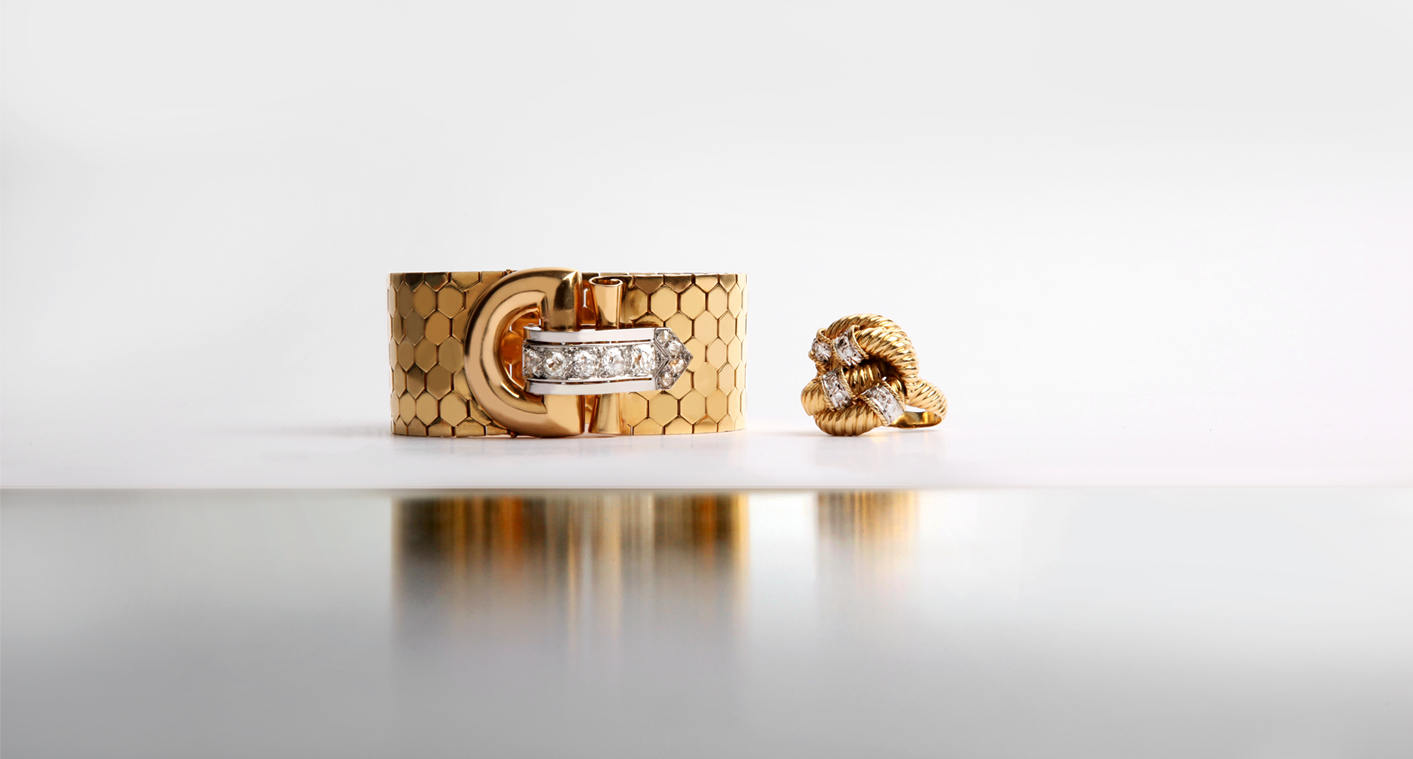3 essentials before buying vintage jewellery
1. In order to avoid taking any unnecessary risks when purchasing a piece of antique jewellery, it is better to use a specialised website or retailer whose jewellery has been closely scrutinised by a certified expert.
2. To buy a piece of antique jewellery, however, you must first and foremost be smitten by the look of the piece, its patina as well as the period in which it was crafted. Learning about and understanding a piece’s historical background are key to determining its quality and value. Depending on the period, the materials, finish and weight of a piece of jewellery can vary widely.
3. Antique jewellery has, by its very definition, withstood the test of time, with it having possibly undergone various modifications or restorations. These must always be specified and have been carefully performed, with the era’s manufacturing techniques and the style of the piece respected.
L'Art Déco : Timeless jewellery with straight, geometric lines
Mainly mounted in platinum (one of the most solid and technical metals to craft), Art Deco jewellery often features pavé-set diamonds, which always have an old cut or, in other words, a flat culet, says Constance Lauvinerie.
'The ornamental stones’ contrasting colours are also typical of the Art Deco era’s style, as in the onyx-coral combination, for instance
As for Art Deco jewellery from famous designers, these tend to be unique pieces that are very rare, while being very highly rated!
Les années 40 : Huge, refined jewellery
The famous Tank motif – a symbol of this era at the end of the war – was at its peak.
During this period, it was not uncommon to see jewellery adorned with synthetic stones given the shortage of precious stones,” emphasises Constance Lauvinerie. «For their designs, this era’s jewellers thus simply combined rose gold with synthetic rubies,for example.
Moreover, the weight of a piece of jewellery from this period is generally a measure of its quality and authenticity, especially in the 1940s when the value of gold was much lower. Bracelets could routinely weigh over 100g! It is therefore important to pay attention to the clasp, which, because of the mass, may have been damaged or replaced.
Les années 60-70 : Make way for monumental jewellery with extravagant colours
At the heart of current trends, these sought-after pieces are often adorned with gemstones such as tourmaline, aquamarine and quartz, or ornamental stones such as tiger’s eye, malachite, coral and onyx, says Constance Lauvinerie.
The bestiary theme also represented a breath of fresh air with its greater creativity and freedom, mirroring the artistic evolution since Pop Art.
Van Cleef and Arpels’ Alhambra, Boucheron’s Serpent Bohème as well as Cartier’s Love and Juste un Clou are all iconic collections that emerged from these decades.It should be noted that, contrary to popular belief, the use of 14-carat gold was customary for jewellery from Italy and the United States.
